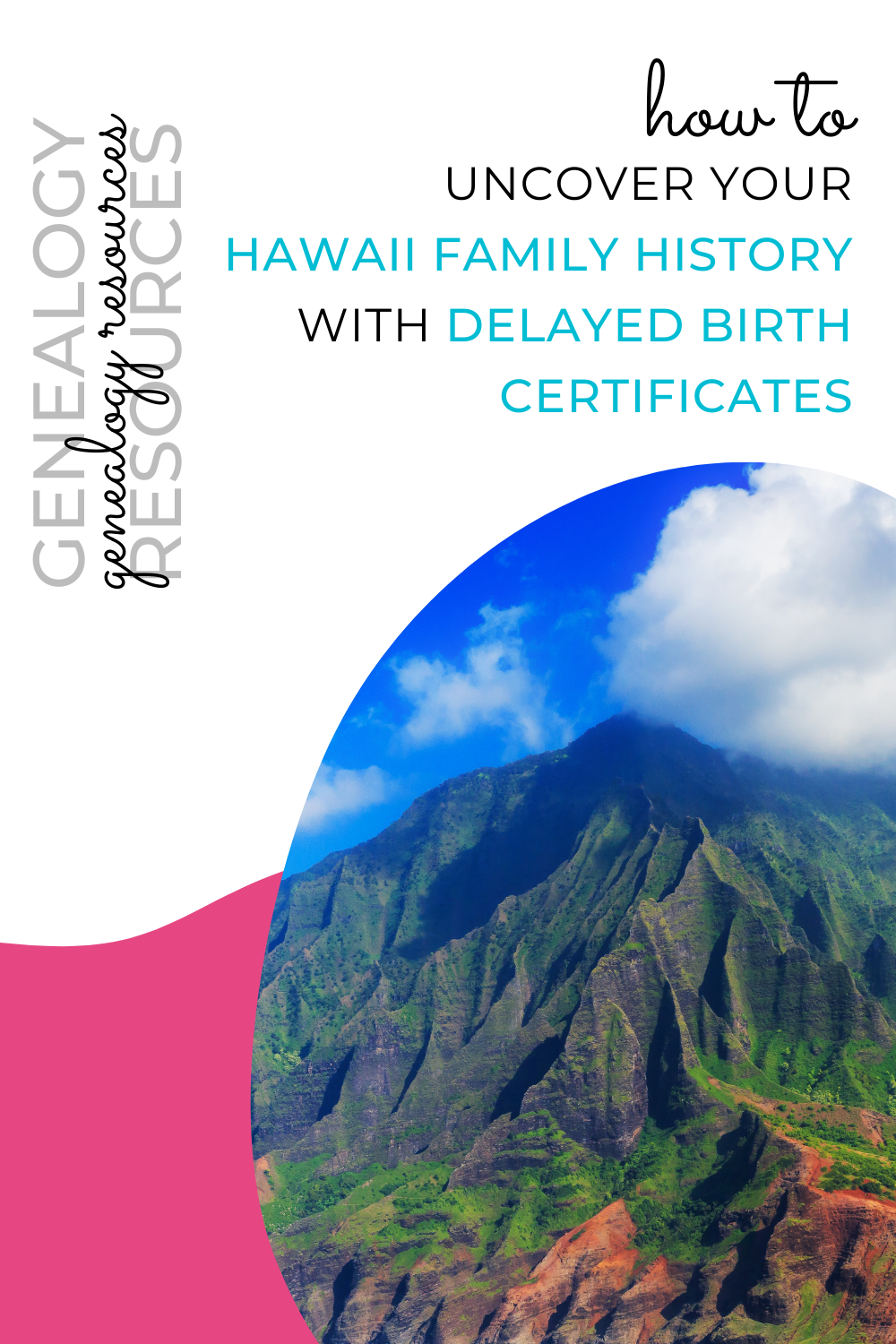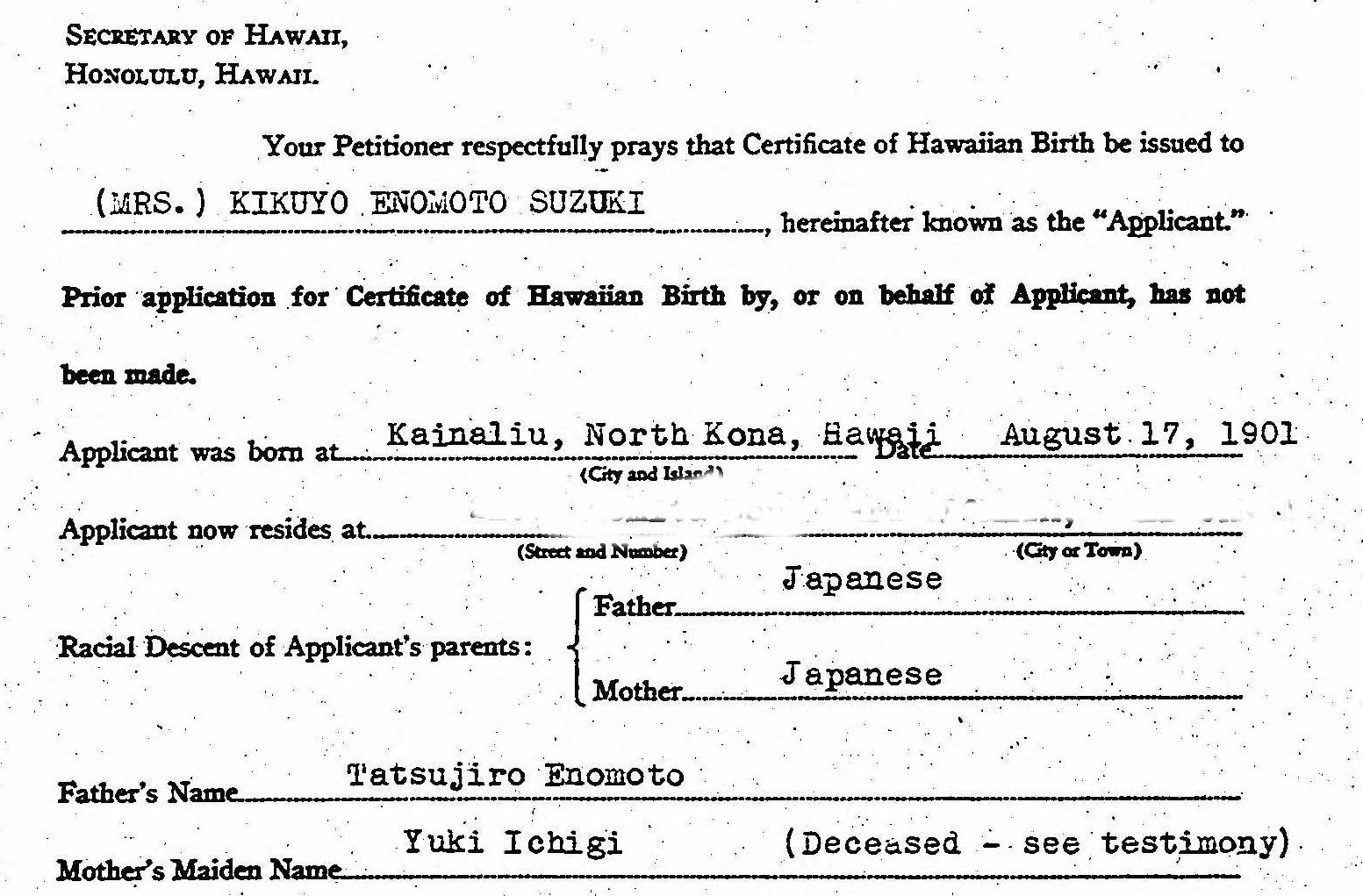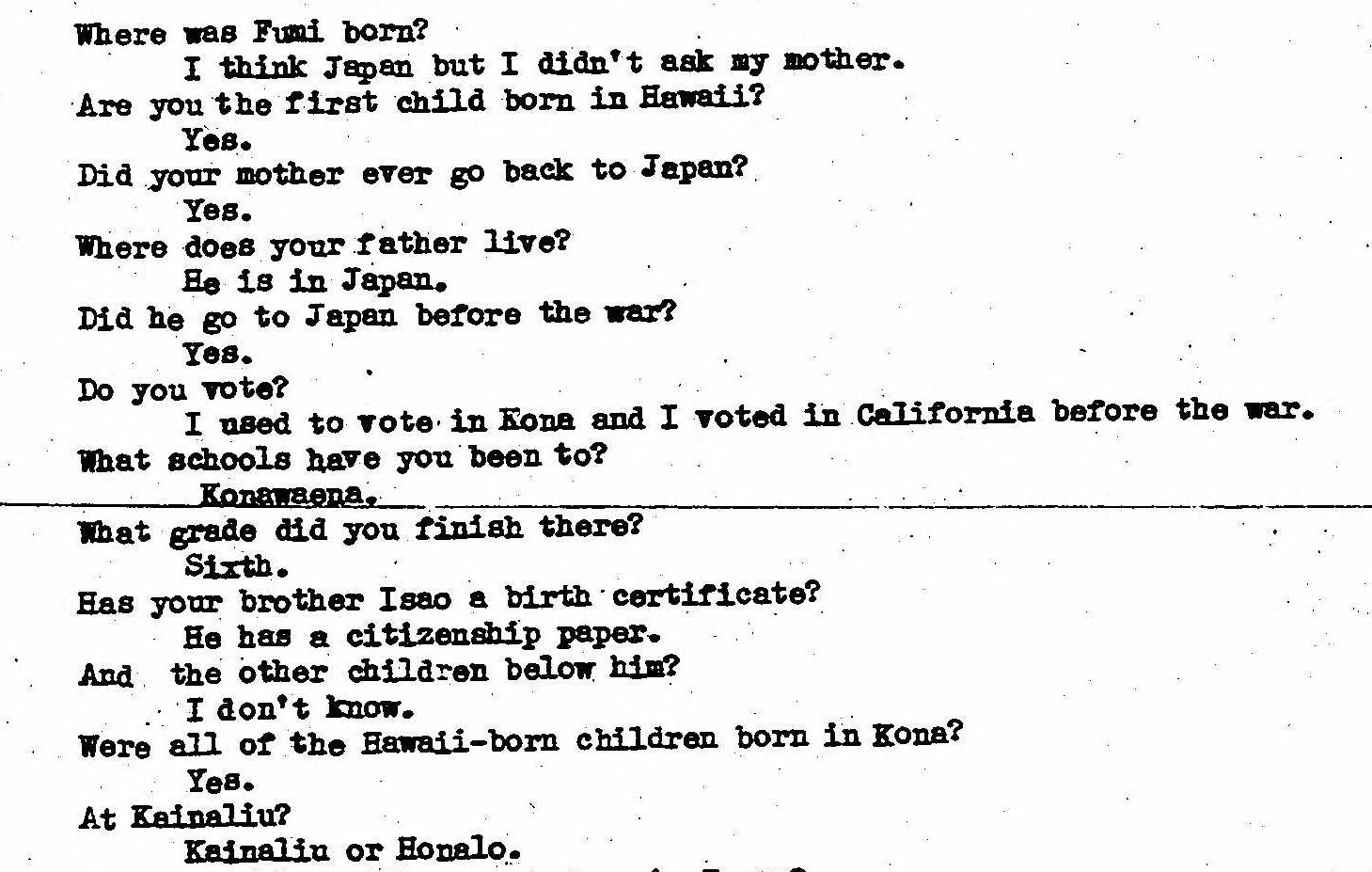How Delayed Birth Certificates from Hawaii Can Benefit Your Genealogy Research
*This post may have affiliate links, which means I may receive commissions if you choose to purchase through links I provide (at no extra cost to you). All opinions remain my own.
If your ancestor was born in Hawaii, you may be able to find a record that is a genealogy gold mine – a delayed Hawaii birth certificate.
While most birth records can give us helpful clues about our family history, delayed birth certificates from Hawaii are packed with documentary evidence of a person’s date and place of birth, parentage, and other details.
In this article, you’ll learn the importance of delayed Hawaii birth records and the genealogical information you can find in them.
Related posts:
5 Fantastic Resources To Trace Your Ancestors That Immigrated To Hawaii
11 of the Best Websites for Free Ship Passenger Lists
What To Know About Alien Registration Files And Where To Find Them
Why delayed Hawaii birth certificates are so important for family history
Delayed birth certificates can provide invaluable information for family historians seeking to learn more about their ancestors.
Unlike traditional birth certificates, which are issued when someone is born, delayed birth certificates are applied for later on in life. My grandmother, for example, applied for a delayed certificate after she was already married. These documents establish the identity of someone whose birth was not registered when they were born.
These birth records can be essential, as they provide more than the basic information found in traditional birth records.
Because applicants had to prove family relationships and their birth in the islands, they have details not found in other Hawaii vital records. They can tell you so much more than your ancestor’s birthdate and place and the names of their parents.
Through copies of original documents and sworn statements from witnesses, they can provide a wealth of family history information that you may not find anywhere else.
While all delayed birth certificates are helpful for genealogy research, the Certificate of Hawaiian Birth Program records are even more extensive and beneficial.
These files include multiple pages of documents and testimony packed with information about the applicant’s early childhood and current life.
The information found in these records can help you piece together bits and pieces about your family history that would be otherwise lost in time, and better understand your ancestor’s life.
Related posts:
10 Terrific Resources For Identifying Your Immigrant Ancestor’s Hometown
How to: Koseki Records and Japanese Genealogy Research
What Are Naturalization Records And How Can They Support Your Research?
The history of Hawaiian delayed birth certificates
Hawaii required birth registration starting in 1842, but many records did not survive. In 1896, the Department of Health was put in charge of administering birth records, although registration wasn’t consistent.
Because so many people did not have proof of their birth in Hawaii, the government created the Certificate of Hawaiian Birth Program in 1911. The program allowed anyone born in Hawaii who was 1 year old or older but whose birth was never registered to apply for a delayed birth certificate.
Since Hawaii was so diverse, with many residents having parents who immigrated there, the program helped people to prove they were born on the islands.
These delayed birth registrations were a way for people with no documents recording their birth to prove their identity. This allowed them to gain access to opportunities such as voting, getting a passport, and applying for Social Security.
While the program began in 1911, it includes people born before then, even into the 1850s. The program was replaced by Late Birth Registration in 1972.
Related posts:
How To Save Hours Of Time With These 8 Translation Tools For Genealogy
Why Should You Use Ethnic Newspapers For Genealogy Research?
31 Family History Interview Questions to Bring Out Their Memories
How your ancestors obtained a delayed Hawaiian birth certificate
The process for getting a delayed birth certificate began with submitting an Application for Certificate of Hawaiian Birth.
There would then be a hearing in front of a representative of the Secretary of Hawaii. The applicant would give testimony to the Secretary’s office about their birth and supply evidence to support their application.
Witnesses such as close family and others who had known them since early childhood would also testify about the person’s birth in Hawaii.
After giving their testimonials, the applicant and witnesses were sometimes recalled to provide further statements based on information learned from others.
If the Secretary of Hawaii felt the testimony and birth certificate application were legitimate, the applicant was issued a certificate.
Related posts:
How to Organize Your Genealogy Files With Binders
How Setting Genealogy Goals Makes You A Better Researcher
7 Simple Steps To Creating A Genealogy Timeline (And Why You Need One)
Example of application. Image source: Ancestry. Note: I removed the applicant’s current address information.
What you can find in the birth records for your Hawaii genealogy research
Delayed Hawaiian birth certificates provide vital information about a person's lineage, such as parents' names, birthplace, parents‘ birthplace, marriage date, and when their family immigrated to Hawaii.
Additionally, many even include photographs taken at the time of registration.
Here are some of the things you can find in these records:
Photos
Birthplaces
Birthdates
Current residence of the applicant, and past residences and dates
Ethnicities
Occupations
Parents’ names and dates of death
Siblings’ names, dates and places of birth, and death information
How many kids the applicant person had and their birth information
How long they attended school and where they went
Immigration information of parents, including if they traveled back to their home country, and when
Documents certifying an immigrant’s arrival in Hawaii
Physical descriptions
Correspondence
Baptism records
Voter registration records
Transcriptions of original records
As you can see, they really can be goldmines of family history details.
Related posts:
How To Easily Organize Your Genealogy To Do List Into Simple Time Blocks
Why You Need a Genealogy Research Log
7 Tips To Help You Create A Successful Genealogy Research Plan
Example of applicant testimony. Image source: Ancestry
Final thoughts
Delayed Hawaiian birth records are an essential resource for Hawaii genealogy research.
They provide information that might not appear in other records, like when someone’s parents immigrated to Hawaii, photos, and physical descriptions.
They can give evidence of kinship relationships, especially helpful for people with common names or who changed their name. They can also point you to other records you can search for, such as passenger lists.
With the information you can uncover in these records, you can not only add names and dates to your family tree but more stories to your family history.



